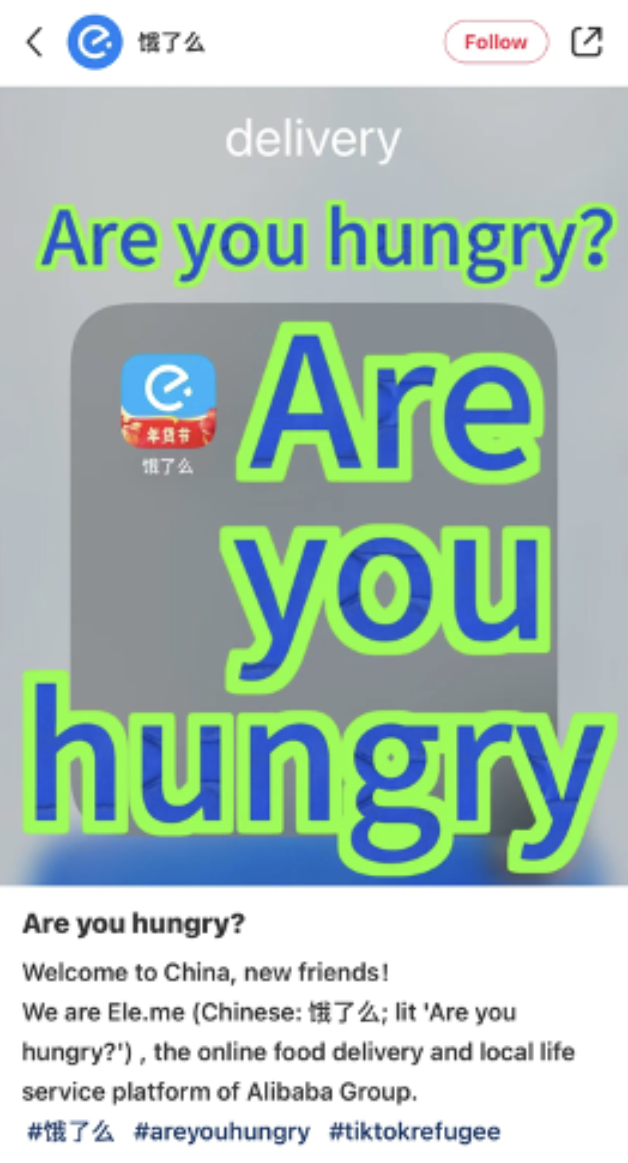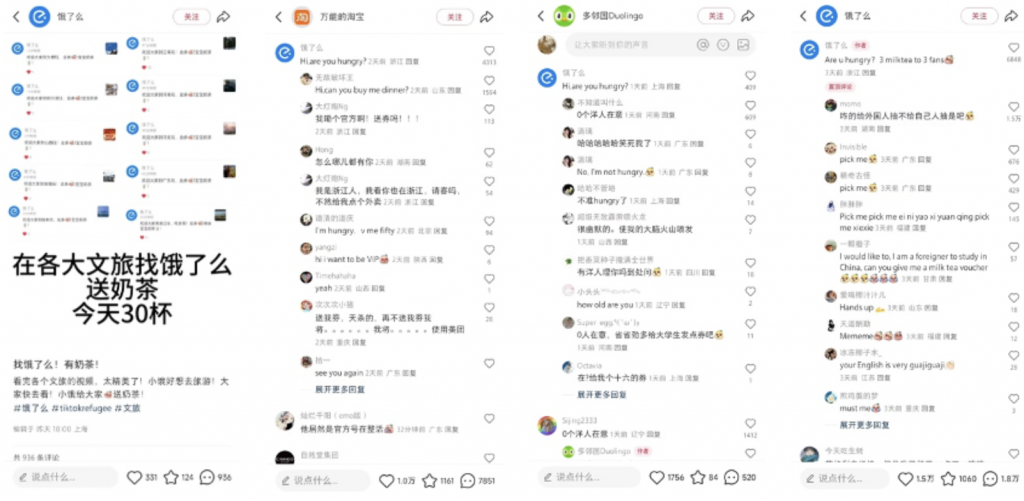TikTok “Refugees” Flood Xiaohongshu/Rednote: How Brands Seized the Viral Wave
As the potential U.S. TikTok ban looms, Chinese social platform Rednote has surged to the top of Apple’s U.S. App Store, attracting a wave of displaced TikTok users humorously dubbing themselves “TikTok refugees.” The hashtag #tiktokrefugee spiked on January 13–14, sparking a global meme frenzy and creating opportunities for brands to capitalize on the trend.
Why Rednote?
Rednote’s mix of short videos, livestreams, and high-quality text-and-image content, combined with its personalized recommendation algorithm, allowed TikTok-style posts to go viral quickly. U.S. users flooded the platform with English-language content, turning the app into an unexpected hub for cross-cultural engagement.
Brands Ride the Viral Wave
1. Ele.me’s Playful Engagement
The food delivery platform Ele.me dominated comment sections under “refugee” posts, asking, “Are you hungry?” while collaborating with brands like Taobao and Duolingo to cross-promote. It also hosted giveaways (e.g., free milk tea) exclusively for international users, sparking playful backlash from local fans and reaching a peak in fans growth.

Ele.me engages fans by offering benefits, leaving comments on cultural and tourism bureau accounts for random milk tea giveaways, and inviting users to suggest accounts for future prize draws, fostering interaction and two-way traffic.

2. Mixue’s Bilingual Charm
Bubble tea giant Mixue Ice Cream & Tea (branded as “Snow King”) leveraged the trend with quirky bilingual posts introducing its “global ambassador” mascot. Its humorous English-Chinese hybrid content outperformed regular posts in engagement.
As an American brand, @Starbucks on Rednote has taken the opportunity to teach its followers Chinese pinyin, “xīng bā kè.” @BawangChaJi perfectly applies its “making friends through tea” philosophy. Meanwhile, @Haidilao showcases its English skills, enthusiastically promoting not just its hot pot but also its manicure services and stunning face-changing performances.

3. Rapid-Fire Commercial Campaigns
Brands like Taobao, pharmaceutical company Sanjiu Weitai, and pet brand Xu Cuihua partnered with influencers for targeted ads. Taobao humorously offered to “photoshop red traditional outfits” for foreign users, while Xu Cuihua used bilingual cat-themed posts to promote cat litter.

More brands participated in this wave:

Key Takeaways:
The #tiktokrefugee trend highlighted the power of real-time, agile marketing. Brands like Ele.me and Mixue thrived by blending humor, cultural relevance, and platform-native tactics (e.g., comment hijacking, bilingual content). While most campaigns prioritized visibility over complexity, the event underscored how viral moments can bridge global audiences—and why brands must stay ready to pivot.
As the hype fades, Rednote’s rise signals a shifting social media landscape where cross-platform “refugees” may increasingly drive unexpected opportunities.